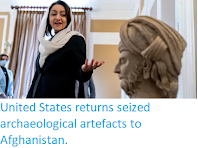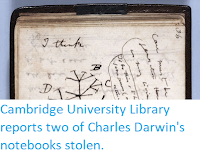A consortium of German museums has agreed to begin their holdings of Benin Bronzes to Nigeria. The Bronzes (which are in fact made of a variety of materials, including bronze, ivory, and wood), were looted during the sack of the Kingdom of Benin in what is now Nigeria in 1897, and subsequently found their way into private and museum collections around the world. Nigeria has been trying to secure the return of these artifacts for several decades, but museums and governments in western nations have been resilient to these attempts, claiming that the Bronzes would not be properly looked after in Nigeria. However, in the past decade high profile campaigns by Nigerian emigres in Europe and North America have raised awareness of the issue, and a purpose-build museum has been constructed in Benin to house returned artworks, the Edo Museum of West African Art, making it harder to justify the retention of the Bronzes in western museums, where they are often not on public display.
The announcement comes as part of a wider German project to return objects looted during the colonial period to Africa, as a way of making some amends for an often-bloody colonial history. Around 1100 Benin artefacts are thought to be held in German museums, with about 530 in the Berlin Ethnological Museum alone. France has also recently begun to discuss the return of looted artefacts to Africa, in 2019 returning a sword that belonged to the nineteenth century religious and political leader El Haj Omar Tall to Senegal. French museums are thought to hold around 90 000 looted African artefacts, with 46 000 in the Quai Branly Museum in Paris alone. However, the majority of these objects come from former French colonies, with relatively few Benin Bronzes. The Netherlands has also announced plans to begin returning African treasures looted during the colonial period.
However, the majority of the known Benin Bronzes (many of these objects ended up in private collections, and there is no official record of the location of these) remain in the UK, where 45 different museums are known to hold artefacts from Benin, including 900 in the British Museum. The UK has no national plan to return such objects, although some individual museums have announced plans to return them. In March 2021 the University of Aberdeen announced plans to return a bronze statue looted from Benin, and Jesus College at the University of Cambridge has agreed to return a bronze cockeral to the city. The Horniman Museum in London is also thought to be considering such a move, as is the Pitt Rivers Museum in Oxford. Individual collectors have also returned some artefacts, most notably Mark Walker, the grandson of Captain Herbert Walker, one of the British soldiers involved in the original sack of the city of Benin, has returned objects held by his family and become a vocal advocate of a more general return.
The Kingdom of Benin dates back to at least the twelth century, and covered much of what is now southwest Nigeria. The Oba (King) of Benin ruled from his capital, Edo, which (slightly confusingly) is now the modern city of Benin in Edo State, Nigeria. By the 1890s the Benin had become a major exporter of Palm oil to British traders on the Niger Delta, but in 1896, following a dispute over taxes, the Oba (King) of Benin cut off this supply of oil. The Acting Consul-General of the Protectorate of Nigeria, James Robert Phillips, drew up plans to invade the state and overthrow the Oba, but these were rejected by the British Foreign Secretary, Lord Salisbury. Instead, Philips dispatched an expedition to 'negotiate' with the Oba, which included 250 soldiers and a pipe band. This force was interpreted as an invasion by the Iyase (commander in chief of the army) of Benin, who dispatched a force to intercept the party. The two forces met at Ughoton, with the British force being defeated and the majority of its leaders either killed or captured.
This was used by Philips to justify a much larger 'punitive' expedition, under the command of Rear-Admiral Harry Rawson. On 9 February 1897 Rawson invaded Benin with a force of 1200 heavily armed soldiers and marines, with the city of Edo falling on 18 February. The city was subsequently lootied of its rich artwork, with individual soldiers, sailors and marines stripping not just the royal palaces and major temples of the city, but also smaller shrines and the homes of individual citizens. These artefacts were subsequently shipped back to the UK, and disposed of as their new owners saw fit, either being sold privately to museums or collectors, or retained as mementoes of the expedition.
This essentially random looting and subsequent sale of artefacts from Benin makes it very hard to know how many objects were taken, and renders almost impossible any hope of understanding the original context of many of the artefacts. This kind of haphazard looting was fairly typical of European colonial forces in Africa (and elsewhere), something which was made worse by subsequent claims that African peoples, now stripped of much of their herritage, actually lacked any meaningful history. While the events surrounding the looting of Benin and other African cities cannot be undone, it is hoped that the return of African artworks and cultural objects will at least go some way towards undoing the perception that Africans were not capable of making these artefacts in the first place.
See also...



Follow Sciency Thoughts on Facebook.
Follow Sciency Thoughts on Twitter.






